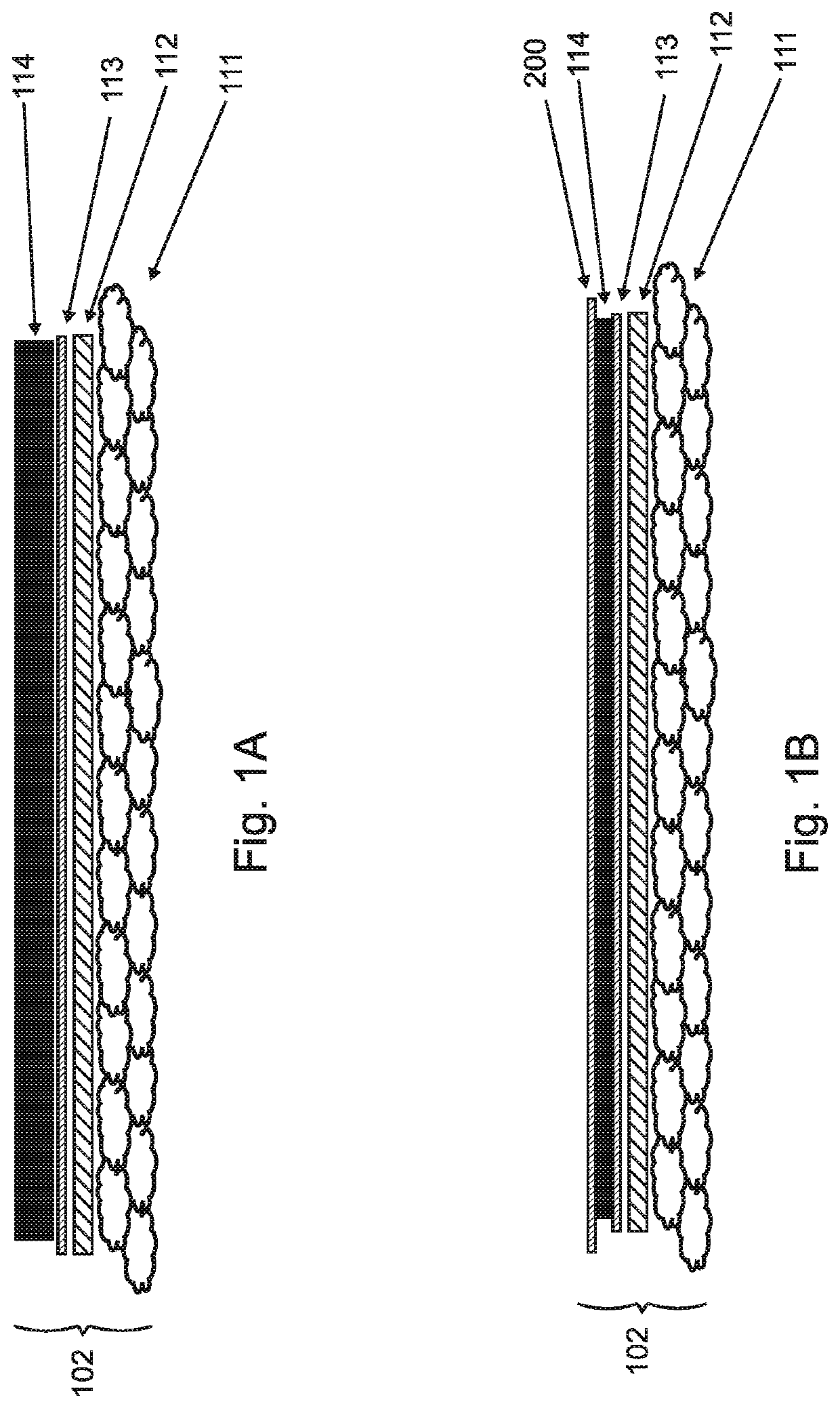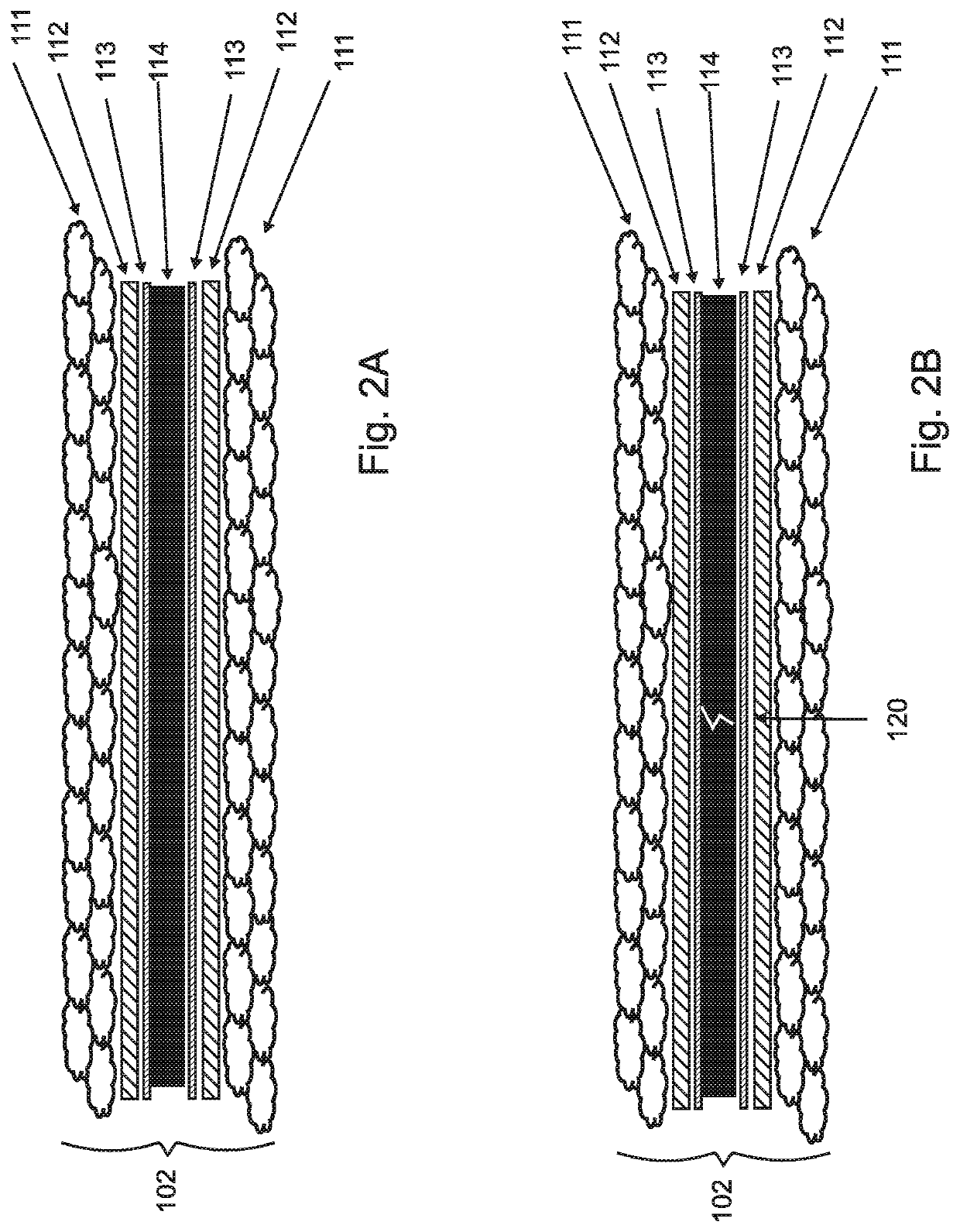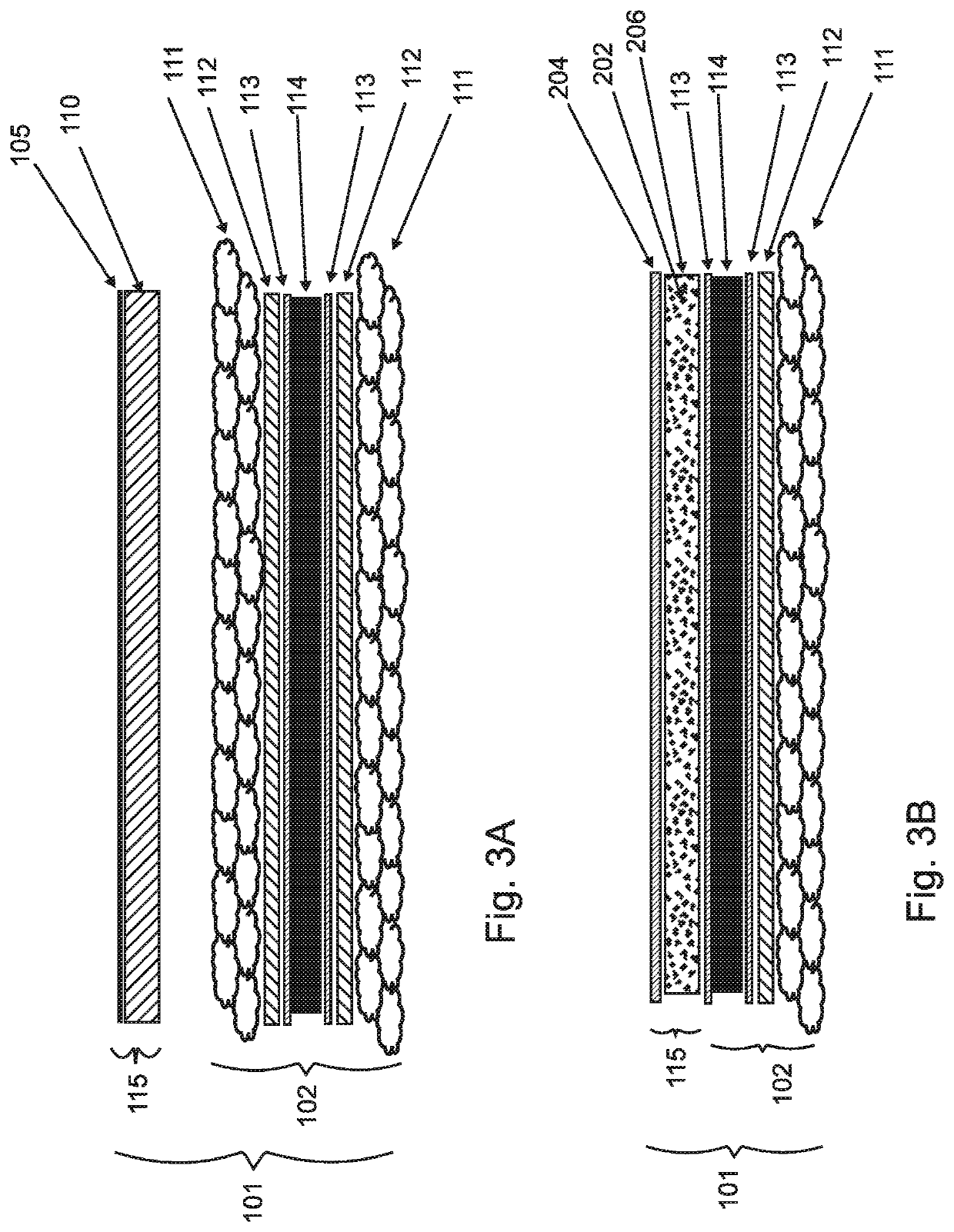Flexible and foldable electromagnetic shielding
a technology of electromagnetic shielding and flexible materials, applied in the field of flexible electromagnetic shielding, can solve the problems of difficult to provide flexible em shielding, and difficult to meet the requirements of civilian or military enclosures, and achieve the effect of high effectiveness
- Summary
- Abstract
- Description
- Claims
- Application Information
AI Technical Summary
Benefits of technology
Problems solved by technology
Method used
Image
Examples
example b
, FIG. 3D
[0123]Crosslinked polyether urethane topcoat 204[0124]Polyester urethane absorbing tie coat adhesive layer 206 filled with 5-25% by dry weight of Ferrite and carbon black 202[0125]Moisture resistant phenolic primer 113[0126]CVD deposited aluminum 114[0127]PET film 110[0128]Moisture resistant phenolic primer 113[0129]Polyester urethane adhesive tie coat layer 112[0130]Isocyanate primer 113[0131]Support Textile 111[0132]Isocyanate primer 113[0133]Polyester urethane adhesive tie coat layer 112[0134]Moisture resistant phenolic primer 113[0135]CVD deposited aluminum 114[0136]PET film 110[0137]Moisture resistant phenolic primer 113[0138]Crosslinked polyether urethane topcoat 204
[0139]Note that Example B includes two LF layers, each of which includes a CVD deposited LF aluminum layer 114 applied to an underlying PET film layer 110. Note further that all of Examples B-E include “topcoat” layers 204 on both outward facing sides of the EM shield laminate. The topcoat layers 204 can c...
example c
, FIG. 3E
[0140]Crosslinked polyether urethane topcoat 204[0141]Polyester urethane absorbing tie coat adhesive layer 206 filled with 5% to 25% by dry weight of Ferrite and carbon black 202[0142]Moisture resistant phenolic primer 113[0143]0.0005″ aluminum foil 114[0144]Moisture resistant phenolic primer 113[0145]Polyester urethane adhesive tie coat layer 112[0146]Isocyanate primer 113[0147]Support Textile 111[0148]Isocyanate primer 113[0149]Polyester urethane absorbing tie coat adhesive layer 206 filled with conductive carbon black loading at 5% to 25% of dry film 202[0150]Crosslinked polyether urethane topcoat 204
[0151]Note that Example C includes two HF barriers 115 formed as polyester urethane tie coat adhesives 206 that are filled with conductive and ferrous particles 202. The particles 202 can be in a resin binder, and can include carbon black, conductive carbon black, graphite powder, Fe3O4 and other iron oxides, and / or ferrite particles including spherical materials. The HF bar...
example d
, FIG. 3F
[0152]Crosslinked polyether urethane topcoat 204[0153]Polyester urethane absorbing tie coat adhesive layer 206 filled with 5% to 25% by dry weight of Ferrite and carbon black 202[0154]Polyester urethane adhesive tie coat layer 112[0155]Moisture resistant phenolic primer 113[0156]support textile 1 oz / yd 111 with silver plated layer 114[0157]Moisture resistant phenolic primer 113[0158]Polyester urethane absorbing tie coat adhesive layer 206 filled with conductive carbon black loading at 5% to 25% of dry film 202[0159]Crosslinked polyether urethane topcoat 204
PUM
| Property | Measurement | Unit |
|---|---|---|
| Fraction | aaaaa | aaaaa |
| Fraction | aaaaa | aaaaa |
| Fraction | aaaaa | aaaaa |
Abstract
Description
Claims
Application Information
 Login to View More
Login to View More - R&D
- Intellectual Property
- Life Sciences
- Materials
- Tech Scout
- Unparalleled Data Quality
- Higher Quality Content
- 60% Fewer Hallucinations
Browse by: Latest US Patents, China's latest patents, Technical Efficacy Thesaurus, Application Domain, Technology Topic, Popular Technical Reports.
© 2025 PatSnap. All rights reserved.Legal|Privacy policy|Modern Slavery Act Transparency Statement|Sitemap|About US| Contact US: help@patsnap.com



